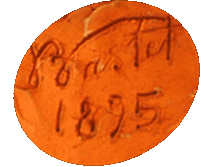|
Biography of the sculptor
A Provencal Artist:
Victorien Antoine was born in Provence in 1852, under the
Second Empire.
His father was a farmer. The family farm of Charagon was located
on the hill of Bollène, a village in the Rhone river
valley.
From the age of 11 he worked to help his parents
on the farm. He did not have much time to study. History,
art and literature were his life time studies. He kept the
family herd and worked on the land. He did not wish to be
an agriculturist but had to take on his brother's work. This
last one had joined the army to fight against the Prussian
in the1870 war.
|
|
Augustin
: Victorien's brother in the courtyard.
Two reliefs decorates the portal columns |
|
In his family, his passion for Art was unique.That
may be the reason why he enrolled for the School of
Beaux-Art of Avignon at the age of 19. All his familiar’s
hopes were confirmed.
There, he was the pupil of sculptor Augustin Louis
Armand (1826-1888) and drawing professor Charles Guilbert
d’Anelle (1820-1883). Prompted by his early
display of artistic talent his teachers advised him
to prepare the examination for the Ecole Nationale
et Speciale des Beaux-Arts in Paris.
|
|
The uprooting in Paris
: begining 1873
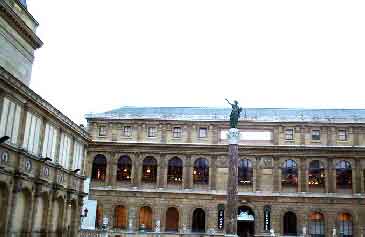
The sculptor-soldier : conscription to the 17th. infantry
regiment of Béziers from october 1875 to august 15th 1879.
|
He received a small scholarship. Like many
students, hard work and frugal life style undermined
his health. After his school registration on march
15th 1875 he was able to study for only two years
.
He prepared the examination to
the Ecole Nationale et Spéciale
des Beaux-Arts of Paris in sculptor
Augustin Dumont's workshop.
(1801-1884)
He was a student from the age of 21
to 30 years old with a leave of 4
years and a half. His teachers were
Augustin Louis Dumont and
Gabriel Jules Thomas (1824-1905).
For a living he drew models for
the Manufacture of Sèvres.
- The School of Decorative Arts in
Paris instructed him towards modern style without
disavowing his Classicism teaching The choice of topics
and designs were let to the imaginary He was a pupil
of Aimé Millet (1819-1891) |
The sculptor-soldier :
conscription to the 17th. regiment of infantry of
Béziers from
october 1875 to august 15th 1879.
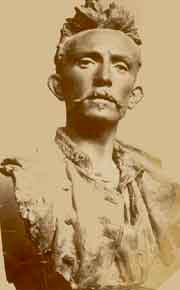
|
He joined the17th regiment of_infantry in Béziers.
The years he had to spend in the army broke his hopes to undertake
the competition for the Prize of Rome. He knew that coming
back to civil life, he will be too old. This period however
enabled him to regain strength and meet a protector - Joseph
Vallarino, a wine merchant of Béziers - who ordered
work during all his career. He introduced him to the notable
ones of Perpignan, Castres, Pézenas and Béziers,
which became faithful customers. Among them, two amateurs
of his artworks : the Eastern Pyrenees senator , Jules Pams
and the manufacturer of the cigarette papers Job, Justin Bardou.
The local press and the municipality praised the sculptor-soldier.
Bastet thanked them for their protection by offering artworks
such as the bas relief of the "premier péché",
or the scene of kind of the "soldat blessé".
He bequeathed to this cultivated city, the pretty terra cotta
bust of "l’enfant endormi", awarded gold medal
at the Marseilles Exhibition Beaux-Arts School in 1879.
The rewarded artist: from
1882
On his return to Paris, at the end of his military
service, he perfected his training as a sculptor. He worked
in Augustin Dumont’s studio and obtained the first prize.
In School he graduaded third of his class. He completed his
training in August 1882 and started at the age of 30 years
old his artist career. He sculpted a little with the Decorative
and Industrial Arts. He probably produced for the Manufacture
of Sevres. His customers for busts sculpture were provincial,
even if family like the Pourquery de Boisserin lived in the
city.
| Terra-cotta
bust of Madame Pourquey de Boisserin |
|
|
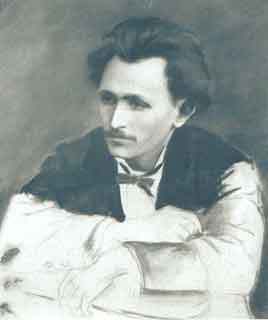
Auto-portrait
of Victorien Antoine Bastet
A photography of Juliette given by an offspring of another contemporary sculptor,
from the same native area than Bastet, Félix Charpentier. |
He shared his life with a young woman from Normandy
called Juliette Delorme . She worked as a model.
Juliette was merry and very sociable. She followed
during several years singing classes. Beginning
1886, her husband initiated her to sculpture and
she exhibited her works at the SAF.
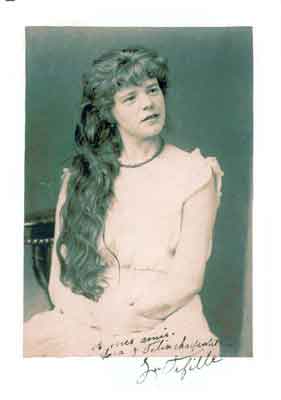
|
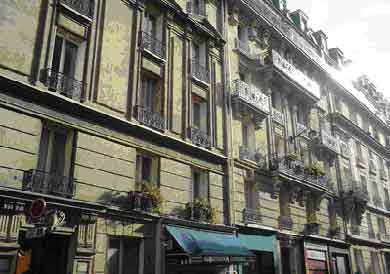 One of the appartment
he lived in the
VI th district
One of the appartment
he lived in the
VI th district |
Victorien was a discreet, introverted artist.
He was not fully at ease in the company of others and preferred
to spend his time reading and working. He refused the visits
of journalists by fears of being misunderstood. However, the
press always praised his work.
In 1886, at the famous Salon of the French Artists he was
rewarded with the second class medal .
While in military service he had sent a sculpture named "Narcisse",
and then years after years he exhibited at the Salon his most
beautiful sculpture.
"L’Abandonnée" classified his work
without contest. Hewas elected member of the jury, at the
side of other great sculptors like Rodin, Carpaux, Dalou…
He remained very attached and dedicated to his native area
and on vacation he enjoyed going back to his home town in
the Languedoc region. Several home town artists, such his
compatriot Felix Charpentier, were his close friends. Naturalism
was the subject of his work "la source du Vaucluse",
"la vigne mourante".
His career success depended on competition
projects, exhibitions (especially at the salon of the French
Artists) and commissions by private customers.
In 1886, he attained his first success by obtaining the second
class medal at the French Artists Salon. This medal made him
eligible to teach and he gave courses to 5 students (of which
his wife: Juliette Delorme). From 1897 to 1902, he was elected
jury member at the French Artists Salon.
In 1901, he was named life member of the Salon.
The ransom of fame : He was 34 years old
His studio : 36, rue des
Artistes in the XIV. district in Paris
Up to the creation of the sculpture called
“l’Abandonnée “ his life had been
financially difficult. He teached to 5 students and produced
a large number of characterful artworks. Famous institutions
ordered his works beginning 1886 when Bastet was 34 years
old : Eve; the Paul Pamard’s monument and six medallions
for the Toulon‘s museum facade.
He had his own workshop built in Paris on Artistes
street, 36 and had enough income to buy marble from Carrare.
He employed two servants which was then a sign of wealth.
The town of Avignon bought some of his work for the Saint
Martial square. He was commissioned mainly for busts and he
only created once a funeral bust for his most faithful customer
: Justin Bardou.
During this period he was busy producing Decorative
Arts for private residence interiors. He sculpted ornamental
fireplaces decorated with subjects he liked : "Salammbô",
"la Comete",
A broken fate: from 1899 to 1905
|
|
A year before the birth of his child André,
Victorian at the age of 47 years old suffered from
bronchitis. In 1902 after a brain tumour, he was
stricken with hemiplegics.
His childhood friends from Bollene, like Doctor
Locque, helped him with commissions of his most
beautiful sculptures. He was too ill and weak. On
the 5th of march 1905 at the age of 52 years old
,Victorian died. He had lived with his family precariously
for the last years of his life. As a widow, Juliette
worked as a linen maid. A job she held up until
her retirement in Algeria where a son lived. André
was only six years old when his father died.
.
Victorien in his studio with
the bust of the Catalane, a subject he enjoyed sculpting.
|
|
